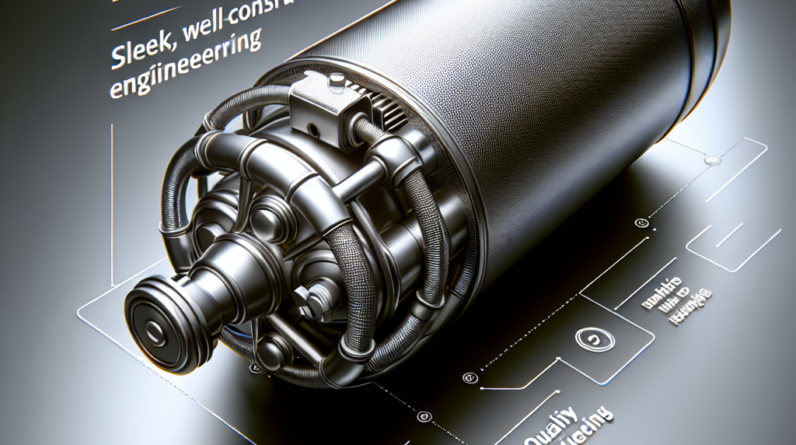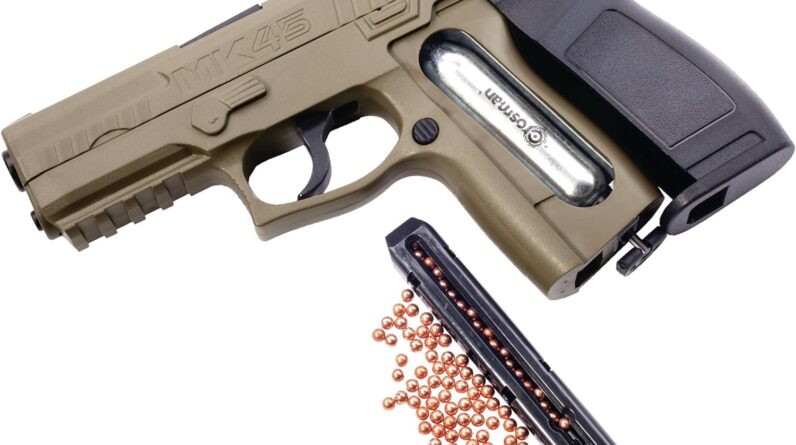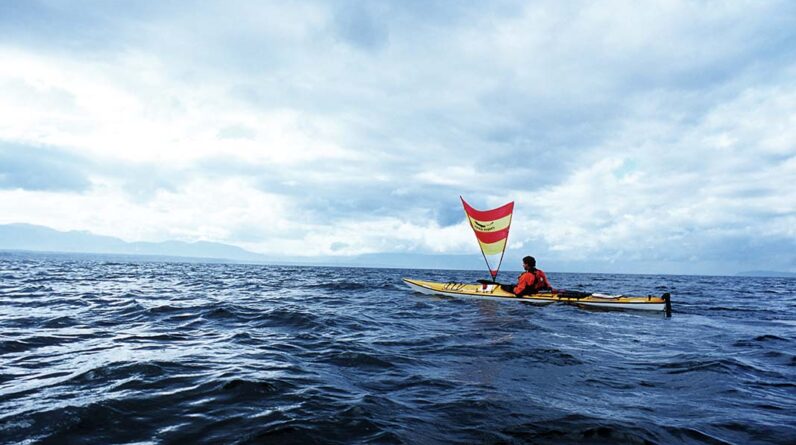
Are you ready to embark on your fishing adventures but aren’t sure which kayak to choose? Look no further! In this guide, we will provide you with valuable tips and insights on how to select the perfect fishing kayak that suits your individual needs. From considering the type of water you’ll be fishing in to assessing your fishing style and storage requirements, we’ve got you covered. Whether you’re a seasoned angler or a beginner, this article will help you make an informed decision and ensure that your fishing kayak becomes your trusty companion on every fishing trip. Get ready to reel in the big one!

This image is property of cdn11.bigcommerce.com.
Factors to Consider
Choosing the perfect fishing kayak requires careful consideration of several factors. From the type of kayak to the additional features, each aspect plays a crucial role in enhancing your fishing experience. In this comprehensive guide, we will explore the various factors you should keep in mind when selecting your ideal fishing kayak. Whether you prefer sit-on-top or sit-inside kayaks, prioritize stability or speed, or have a specific budget in mind, this article will help you make an informed decision.
Sit-on-Top vs Sit-Inside Kayaks
The first decision to make when choosing a fishing kayak is between a sit-on-top or sit-inside model. Both options have their advantages and considerations to keep in mind.
Advantages of Sit-on-Top Kayaks
Sit-on-top kayaks are a popular choice for many anglers due to their ease of use and versatility. These kayaks provide a more open space and are ideal for those who prefer a more relaxed and casual fishing experience. Sit-on-top kayaks offer enhanced stability, making them suitable for beginners or anyone who values stability over speed. Additionally, they are self-draining, which means that any water that enters the kayak will automatically drain out through scupper holes, ensuring a dry seating area.
Advantages of Sit-Inside Kayaks
Sit-inside kayaks, on the other hand, are known for their increased maneuverability and protection from the elements. These kayaks have a cockpit where you sit inside, providing a lower center of gravity and improving balance. Sit-inside kayaks are an excellent choice for those who want to stay dry and warm in colder weather or rougher water conditions. They also offer more storage options, with ample space inside the cockpit for gear and accessories.
Considerations for Sit-on-Top Kayaks
Although sit-on-top kayaks offer numerous advantages, there are a few considerations to keep in mind. Due to their open design, they are more susceptible to wind, especially when paddling against strong gusts. This can affect your control and overall paddling experience. Additionally, because they are self-draining, you may get wet in rougher water conditions. However, this can be mitigated by wearing appropriate clothing and using kayak accessories such as spray skirts or splash guards.
Considerations for Sit-Inside Kayaks
While sit-inside kayaks provide excellent protection and maneuverability, they are not as convenient for entry and exit as sit-on-top kayaks. If you plan on fishing in shallow areas where you may need to wade in and out of your kayak frequently, a sit-inside kayak may not be the best choice. Additionally, the enclosed cockpit can make it challenging to access your gear quickly. However, this can be remedied by using proper storage options and securing essential items within arm’s reach.
Kayak Length
The length of your fishing kayak is an essential factor to consider, as it affects various aspects of your kayaking experience.
Stability vs Speed
When it comes to kayak length, a general rule of thumb is that longer kayaks offer better tracking and speed, while shorter kayaks tend to be more maneuverable and stable. If you prioritize stability and plan on fishing in calm waters or near the shore, a shorter kayak may be more suitable. On the other hand, if you anticipate longer paddling trips or frequently encounter choppy waters, a longer kayak will provide better tracking and speed.
Paddle Efficiency
Another factor to consider when determining kayak length is paddle efficiency. Longer kayaks allow for a more efficient paddling stroke, as they travel through the water more smoothly. This means that you can cover greater distances with less effort, allowing you to explore more fishing spots in a shorter amount of time. However, keep in mind that longer kayaks may require more effort to accelerate and turn, especially in tight spaces.
Transportation and Storage
The length of your kayak also plays a role in transportation and storage considerations. Longer kayaks may require a larger vehicle or additional roof rack extensions for transportation. They also require more storage space at home or in your garage. If you have limited space or travel frequently, it might be more convenient to opt for a shorter kayak that is easier to transport and store.
Fishing Space
Lastly, the length of your fishing kayak determines the available fishing space. Longer kayaks generally offer more deck space and storage options, allowing you to bring along additional fishing gear and accessories. If you plan on carrying a lot of equipment or prefer a more spacious setup, a longer kayak will better accommodate your needs. However, if you prefer a minimalistic approach or have limited gear, a shorter kayak may be more suitable.
Width and Stability
The width of your fishing kayak is closely related to its stability, a crucial consideration for a comfortable and secure fishing experience.
Primary Stability
Primary stability refers to the initial stability of a kayak when it is at rest or in calm waters. A wider kayak generally offers higher primary stability, making it more suitable for beginners or those who prioritize stability in their fishing kayak. If you are new to kayaking or prefer a more secure feeling on the water, a wider kayak will help you feel balanced and in control.
Secondary Stability
Secondary stability, on the other hand, refers to a kayak’s stability when it is tilted or leaned to a side. This type of stability becomes more relevant when maneuvering in rougher waters or when engaging in activities such as casting or reeling in a fish. While a wider kayak may offer higher primary stability, it may compromise secondary stability. Narrower kayaks tend to offer better secondary stability, allowing for more precise movements and control in choppy conditions.
Width and Maneuverability
The width of a kayak also affects its maneuverability. Wider kayaks generally require more effort to turn, especially in tight spaces or when navigating through obstacles. If you plan on fishing in narrow rivers or areas with dense vegetation, a narrower kayak will provide better maneuverability. However, keep in mind that narrower kayaks may sacrifice some stability, especially for beginners or those who prefer a more relaxed fishing experience.
Load Capacity
The width of your fishing kayak also determines its load capacity. Wider kayaks can typically carry more weight without affecting stability. This is particularly important if you plan on bringing along additional equipment, coolers, or camping gear on your fishing trips. If you anticipate carrying a heavy load or plan on multi-day fishing adventures, a wider kayak with a higher load capacity will better accommodate your needs and ensure a stable and comfortable experience.
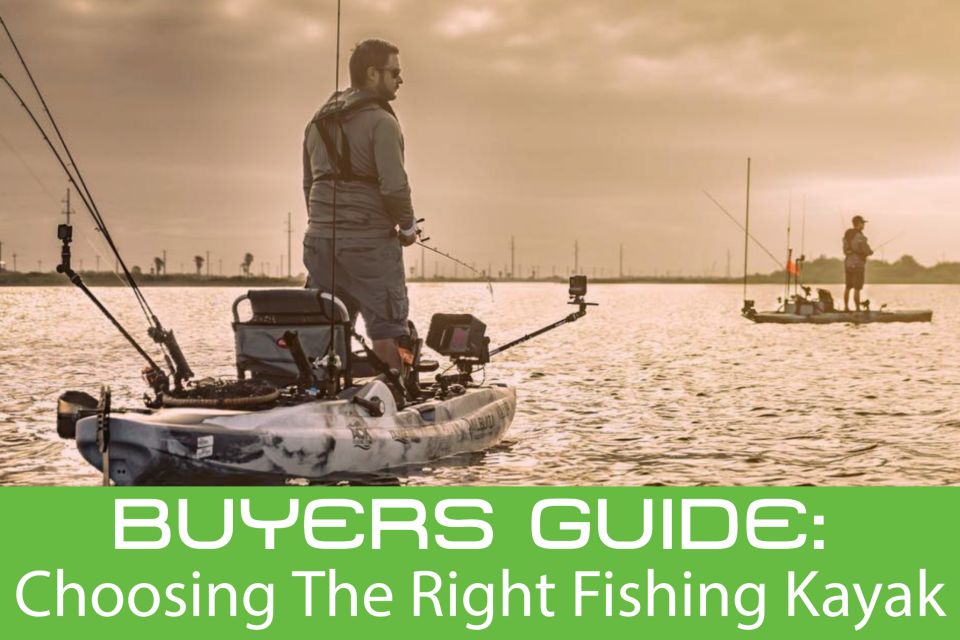
This image is property of www.railblaza.com.
Weight Capacity
Considering the weight capacity of your fishing kayak is crucial for your safety and the overall performance of the kayak.
Personal Weight and Gear
Before selecting a fishing kayak, it’s essential to take into account your own weight and the weight of any additional gear you intend to bring along. Add both figures to determine the total weight the kayak will need to support. It’s important to choose a kayak with a weight capacity that exceeds your own weight and the weight of your gear. This will ensure that the kayak remains stable, rides at the proper waterline, and is not compromised by excessive weight.
Safety Considerations
Choosing a fishing kayak with an appropriate weight capacity is not only essential for stability but also for safety. Overloading a kayak can increase the risk of capsizing or swamping, especially in rough water conditions. By selecting a kayak with a higher weight capacity, you can ensure that you have a safety margin for unexpected situations or when carrying additional equipment. It’s always better to err on the side of caution when it comes to weight capacity and prioritize your safety on the water.
Hull Design
The hull design of a fishing kayak greatly influences its performance and handling characteristics in different water conditions.
Skeg/Rudder
Some fishing kayaks feature a skeg or a rudder, which enhance directional stability and make paddling more efficient. Skegs are retractable fins located on the underside of the kayak near the stern. They can be deployed to provide better tracking in windy or choppy conditions while easily retracting in calmer waters. Rudders, on the other hand, are adjustable fins controlled by foot pedals. They provide enhanced maneuverability and control, especially in strong currents or when paddling against wind or waves. Consider whether you prioritize tracking and efficiency or maneuverability in your fishing kayak and choose one with the appropriate feature.
Chine
The chine is the edge where the bottom of the kayak meets the side. It greatly affects the kayak’s stability and handling characteristics. Hard chines provide increased primary stability, allowing for a more secure and balanced feeling on the water. They are ideal for beginners or anglers who prefer a more stable fishing platform. Soft chines, on the other hand, offer better secondary stability and maneuverability. They allow for smoother transitions between leaning positions and enable more precise movements in rough water or when casting.
Hull Shape
Fishing kayaks typically come in two primary hull shapes: flat-bottom and V-shaped. Flat-bottom hulls provide high primary stability and are easier to stand on, making them suitable for those who prefer kayak fishing while standing. They are also more maneuverable in shallow or calm waters. V-shaped hulls, on the other hand, offer better tracking and speed. They cut through water more efficiently and perform well in choppy conditions or on longer paddling trips. Consider the type of water you will be fishing in and the activities you plan on engaging in to select the most suitable hull shape for your needs.
Tracking
Tracking refers to a kayak’s ability to maintain a straight course without excessive effort or frequent correction. It is an important consideration if you plan on covering long distances or paddling against wind or current. Kayaks with better tracking capabilities offer greater efficiency and require less energy to paddle in a straight line. A kayak’s length, hull shape, and the presence of a skeg or rudder all contribute to its tracking performance. If you prioritize straight-line paddling and efficiency, choose a kayak that excels in tracking.
Speed
The hull design greatly influences the speed potential of a fishing kayak. Longer and narrower kayaks tend to offer higher top speeds, allowing you to cover more ground in less time. If you plan on long-distance paddling or want to reach fishing spots more quickly, consider a kayak with a sleek and streamlined hull design. However, keep in mind that speed may come at the cost of stability, so assess your skill level and comfort with trade-offs before making a decision.

This image is property of www.onthewater.com.
Storage Space
Having sufficient storage space in your fishing kayak is essential for carrying your fishing gear, equipment, and personal belongings securely.
Types of Storage
Fishing kayaks generally offer various types of storage options. The most common are open deck space, hatches, and onboard accessories. Open deck space refers to the uncovered area on the kayak’s surface where you can place items such as coolers, tackle boxes, or fishing crates. Hatches are contained compartments within the kayak’s hull that provide sealed storage areas. These can be useful for storing sensitive items such as electronics, cameras, or personal belongings. Onboard accessories such as rod holders, paddle holders, and gear tracks also contribute to your overall storage capacity and organization.
Deck Space
Open deck space is particularly important for anglers who require easy access to their gear or prefer a more minimalist setup. If you prefer to keep your fishing equipment within arm’s reach or frequently switch between different tackle options, a kayak with ample deck space is ideal. Consider the size and layout of the deck space, as well as any additional features such as bungee cords or attachment points to secure your gear effectively.
Hatches
Hatches provide enclosed storage areas within the kayak’s hull. They are typically watertight and allow you to safely store items that need protection from water or prolonged exposure to moisture. If you plan on carrying valuable gear or electronic devices, consider a fishing kayak with multiple hatches of various sizes. This will allow you to organize your belongings and keep them dry, secure, and easily accessible when needed.
Onboard Accessories
Onboard accessories such as rod holders, paddle holders, and gear tracks can significantly enhance your storage options. Rod holders, for example, allow you to keep your fishing rods secure and within reach, preventing them from getting tangled or damaged during transportation. Paddle holders are useful for securing your paddle when not in use, freeing up your hands for fishing or other tasks. Gear tracks provide a versatile attachment system that enables you to add additional accessories such as camera mounts, fishfinder mounts, or cup holders. Consider the onboard accessories offered by different fishing kayaks and choose the ones that will best accommodate your particular gear and fishing style.
Transportation
Transporting your fishing kayak safely and conveniently is an important factor to consider, especially if you plan on traveling to different fishing locations.
Car Roof Racks
If you have a vehicle suitable for transporting a fishing kayak, car roof racks are a popular choice. There are various types of roof racks available, including J-style carriers, saddle-style carriers, and stacker carriers. J-style carriers attach to your vehicle’s crossbars and secure the kayak on its side, while saddle-style carriers cradle the kayak and provide additional support. Stacker carriers allow you to transport multiple kayaks on their sides, maximizing storage capacity. Additionally, consider investing in kayak cradles or foam pads to protect your kayak’s hull during transportation.
Trailer
For those who prefer not to rely on roof racks or have multiple kayaks to transport, a kayak trailer can be a practical solution. Kayak trailers come in different sizes and configurations, allowing you to tow your kayak(s) behind your vehicle. They offer convenience and ease of loading and unloading, particularly for heavier kayaks or those with limited lifting capacity. Before purchasing a kayak trailer, ensure that your vehicle is equipped with the necessary towing capabilities and that your chosen trailer is compatible with your kayak’s size and weight.
Cart
Kayak carts, also known as kayak trolleys, are an excellent option for easily transporting your kayak from your vehicle to the water. These carts consist of a frame with wheels that attach to the kayak, allowing you to roll it effortlessly across various terrains. They are particularly useful for launching from boat ramps, navigating through rough terrain, or accessing remote fishing spots. When selecting a kayak cart, opt for one with durable wheels and an adjustable frame that can accommodate your kayak’s size and weight.
Portability
If you anticipate frequently carrying your fishing kayak over shorter distances or need a lightweight and compact option, consider a portable kayak. Inflatable kayaks or collapsible kayaks are highly portable and can be conveniently stored in a backpack or a small carry case. While they may not offer the same performance or durability as their rigid counterparts, portable kayaks are an excellent choice for anglers who prioritize ease of transportation and limited storage space.
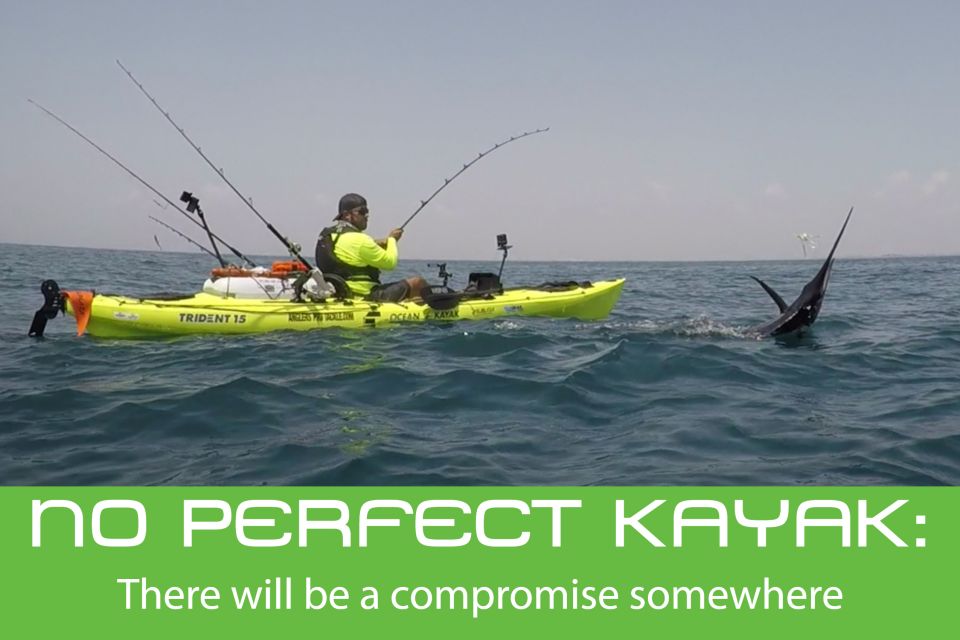
This image is property of www.railblaza.com.
Budget
Setting a budget for your fishing kayak purchase is essential, as it helps narrow down your choices and ensures that you make a financially responsible decision.
Setting a Budget
Before researching fishing kayaks, determine the maximum amount you are willing to spend. Consider your overall fishing experience, how frequently you plan on kayaking, and the features that are most important to you. It’s essential to find a balance between cost and quality and avoid overspending on unnecessary features or materials. By setting a budget, you can focus your search on kayaks within your price range and make an informed decision based on your specific needs.
Cost Considerations
When it comes to fishing kayaks, the cost can vary significantly depending on factors such as brand, material, size, and additional features. Generally, plastic or polyethylene kayaks are more affordable compared to higher-end materials like fiberglass or carbon fiber. However, keep in mind that cheaper kayaks may lack certain features or compromise on durability. Research different kayak brands and models, read customer reviews, and compare prices to ensure that you are getting the best value for your investment.
Value for Money
While it’s important to consider your budget, remember to prioritize value for money rather than solely focusing on the cheapest option. Investing in a high-quality fishing kayak that meets your specific needs and offers the necessary features will ensure a better fishing experience in the long run. Take into account the kayak’s durability, performance, included accessories, and overall reputation when evaluating its value for money. By choosing a kayak that provides excellent quality and functionality within your budget, you can make a worthwhile investment that will enhance your fishing adventures for years to come.
Additional Features
Several additional features can enhance your fishing kayak and make your time on the water even more enjoyable and productive.
Rod Holders
Rod holders are indispensable for hands-free fishing, allowing you to secure your fishing rods while waiting for a bite. Before purchasing a fishing kayak, consider the number and location of rod holders that are provided or can be added as aftermarket accessories. Flush-mounted rod holders are commonly found in most fishing kayaks and are ideal for trolling or storing rods when not in use. Adjustable or swivel rod holders offer greater flexibility, allowing you to position your rods at different angles or remove them easily when necessary. Choose a kayak that can accommodate your preferred number of rod holders and their desired locations.
Seat Comfort
Spending prolonged periods on the water requires a comfortable seating arrangement. Look for a fishing kayak with an adjustable and padded seat that provides sufficient back support. Some kayaks offer higher seating positions that allow for better visibility and make casting or reeling in fish easier. Consider a kayak with an adjustable footrest or pedals to ensure proper leg support and a comfortable paddling position. Additionally, check if the kayak seat is removable or replaceable, as this will enable you to customize your seating setup to suit your individual preferences.
Anchoring System
An anchoring system can greatly assist with maintaining your position in areas with currents or windy conditions. Some fishing kayaks come equipped with anchor trolleys or cleats that allow you to secure an anchor at the bow or stern. This feature is particularly useful when you want to spend more time fishing in one specific area or need to hold your position while attending to other tasks. If you anticipate fishing in rivers, strong currents, or windy conditions, consider a kayak with an integrated anchoring system or one that allows for easy installation of aftermarket anchor accessories.
Trolling Motor Compatibility
For anglers who prefer a hands-free fishing experience or need assistance with covering larger distances, a trolling motor can be a game-changer. Look for a fishing kayak that is compatible with trolling motors, either through dedicated motor mounts or pre-installed transom plates. This feature allows you to attach a trolling motor to your kayak, providing additional propulsion and freeing up your hands for fishing. Before purchasing a trolling motor, ensure that it falls within the kayak’s recommended weight and thrust capacity, and check if the kayak offers a suitable mounting system or additional accessories for easy integration.
Fishfinder Mounting
If you rely on fishfinders or other electronics for locating fish and navigating unfamiliar waters, consider a fishing kayak with dedicated fishfinder mounting options. Some kayaks have pre-installed transducer scupper holes or mounting plates that allow for easy installation of fishfinders or other electronics. Having your fishfinder mounted securely and conveniently within your kayak ensures optimal visibility, prevents accidental damage, and allows for efficient use of your fishing gear. Consult the kayak manufacturer’s specifications or inquire about fishfinder compatibility before making your final decision.
Stability Enhancements
While stability is an important aspect of any fishing kayak, some models offer additional stability-enhancing features. These may include built-in outriggers or stabilizer bars that provide extra support and make standing and fishing more comfortable. Other stability enhancements can include wider hull designs, innovative hull materials, or advanced engineering techniques. If stability is a top priority for you, explore fishing kayak models that incorporate specific features designed to enhance stability. Keep in mind that while these features may offer improved stability, they may also have trade-offs in terms of weight, maneuverability, or speed.
Customizability
Lastly, consider the customizability of your fishing kayak. Some anglers prefer to personalize their kayaks by adding accessories, modifying storage setups, or adjusting seating arrangements. If you plan on customizing your fishing kayak, look for one that offers a versatile platform with various attachment points, gear tracks, or mounting options. This will give you the freedom to tailor your kayak to your specific fishing style, maximize its functionality, and adapt it to different fishing environments. Research aftermarket accessories and kayak modification options compatible with your chosen kayak to ensure that it can be customized according to your preferences.
By carefully evaluating and considering the factors outlined in this guide, you can confidently choose the perfect fishing kayak that meets your specific needs and fishing style. Remember, there is no one-size-fits-all solution, and what works best for one angler may not necessarily be suitable for another. Take your time, test out different kayaks if possible, and prioritize the features and characteristics that are most important to you. With the right fishing kayak by your side, you’ll be ready to embark on countless memorable fishing adventures and enjoy the tranquility and excitement of the water.
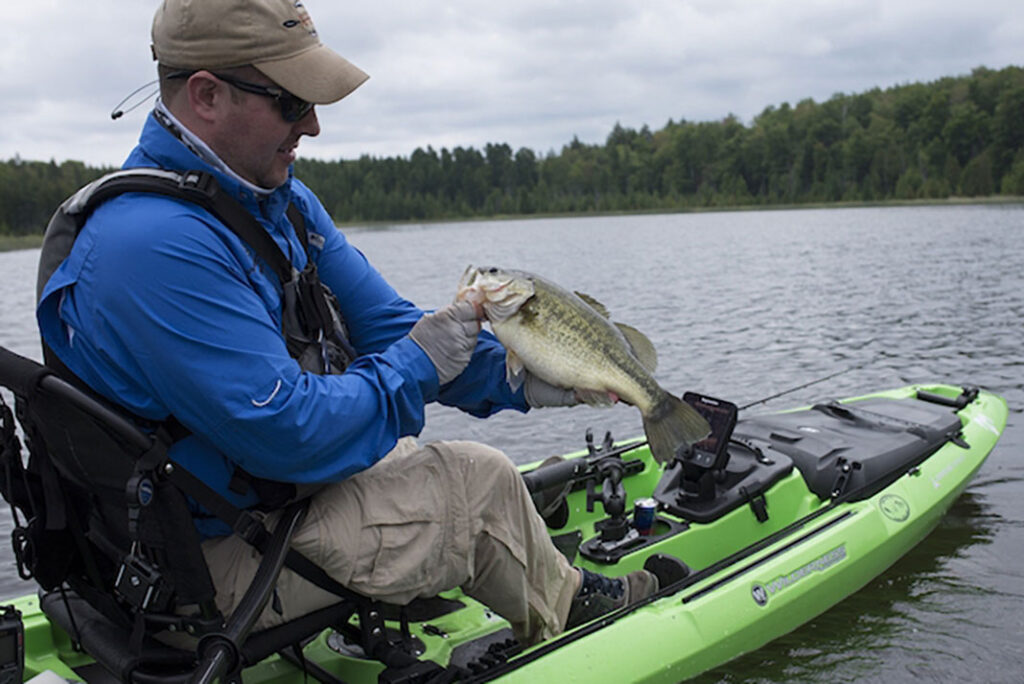
This image is property of paddlingmagazine-images.s3.amazonaws.com.



